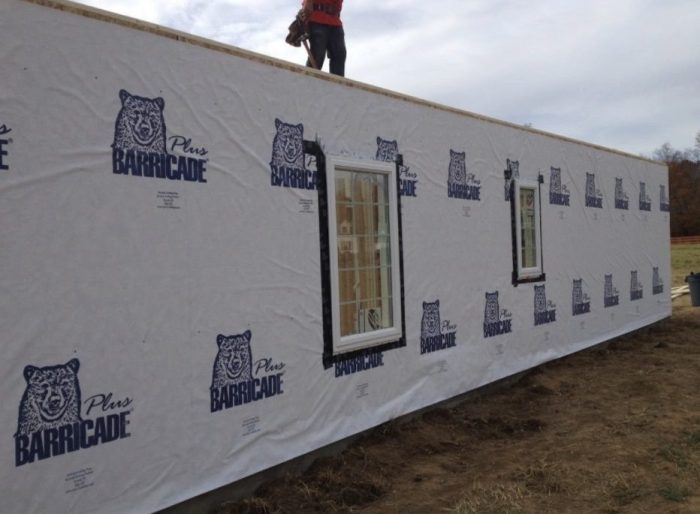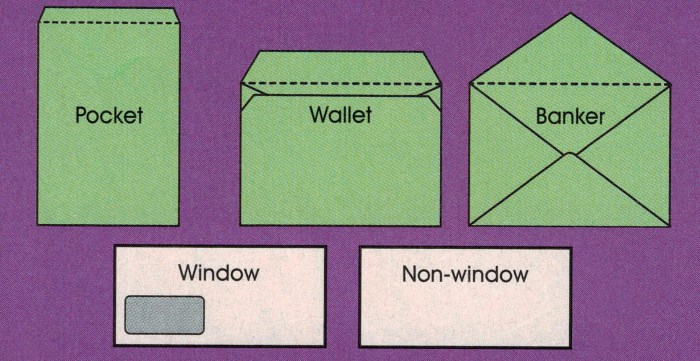Envelope Materials Resistant to Extreme Weather: A Comprehensive Guide
Exploring the realm of Envelope Materials Resistant to Extreme Weather, this introduction sets the stage for a deep dive into the importance, types, design considerations, and testing procedures of materials that can withstand the harshest weather conditions. It aims to captivate readers with a blend of informative content and engaging storytelling.
Highlighting the significance of envelope materials in safeguarding structures against the wrath of nature, this overview aims to shed light on the critical role these materials play in ensuring the longevity and durability of buildings in extreme climates.
Importance of Envelope Materials Resistant to Extreme Weather
Extreme weather conditions can pose significant threats to buildings, making it crucial for envelope materials to withstand these challenges. Without durable and weather-resistant materials, structures are vulnerable to damage and deterioration over time.
Impact of Extreme Weather on Buildings
Extreme weather such as heavy rain, strong winds, freezing temperatures, and intense sunlight can wreak havoc on buildings. For example, prolonged exposure to rain can lead to water infiltration, mold growth, and structural decay. High winds can cause damage to roofs, windows, and other external components, compromising the overall integrity of the building.
Freezing temperatures can result in the expansion and contraction of building materials, leading to cracks and weakening of the structure. Additionally, intense sunlight can cause fading and deterioration of exterior surfaces, impacting both the aesthetic appeal and longevity of the building.
Role of Envelope Materials in Protection
Envelope materials play a crucial role in protecting structures from harsh weather elements by serving as the first line of defense against external forces. Weather-resistant materials such as durable cladding, waterproof membranes, and impact-resistant glazing help prevent water infiltration, air leakage, and thermal bridging.
By choosing envelope materials that are designed to withstand extreme weather conditions, building owners can ensure the longevity, durability, and safety of their structures.
Types of Envelope Materials for Extreme Weather Resistance
When it comes to choosing envelope materials for extreme weather resistance, there are several options available, each with its unique characteristics and performance. Understanding the different types of materials can help you make an informed decision based on your specific needs.
1. Metal
Metal, such as aluminum or steel, is known for its durability and strength, making it a popular choice for envelope materials in extreme weather conditions. Metal envelopes can withstand high winds, heavy rains, and even hail, providing excellent protection against the elements.
2. Vinyl
Vinyl is another popular choice for envelope materials due to its resistance to moisture, heat, and UV rays. Vinyl envelopes are typically low-maintenance and can retain their color and shape over time, making them a durable option for extreme weather conditions.
3. Fiber Cement
Fiber cement envelopes are made from a mixture of cement, sand, and cellulose fibers, providing excellent resistance to fire, water, and insects. This material is highly durable and can withstand harsh weather conditions, making it a reliable choice for extreme climates.
4. Engineered Wood
Engineered wood, such as plywood or oriented strand board (OSB), is designed to be more resistant to moisture and warping compared to traditional wood. Engineered wood envelopes offer the natural look of wood with added durability, making them suitable for extreme weather environments.
5. Insulated Concrete Forms (ICFs)
ICFs are a combination of concrete and insulation, providing superior strength and energy efficiency. These envelopes are highly resistant to extreme weather conditions, including high winds, hurricanes, and even earthquakes, making them a popular choice for areas prone to severe weather.
Design Considerations for Envelope Materials in Extreme Weather
When architects and engineers are selecting materials for envelope design in extreme weather conditions, there are several crucial factors they must consider to ensure the durability and performance of the building. Climate plays a significant role in determining the type of materials that will be most suitable for withstanding the harsh conditions.
Additionally, innovative design solutions are often implemented to enhance the resilience of the building envelope.
Factors Considered by Architects and Engineers
- Weather Resistance: The material must be able to withstand high winds, heavy rainfall, extreme temperatures, and other weather conditions specific to the location.
- Durability: The envelope material should have a long lifespan and require minimal maintenance to ensure the building remains protected over time.
- Energy Efficiency: Selecting materials that provide insulation and reduce heat transfer can help improve the building's energy efficiency and lower heating and cooling costs.
- Aesthetics: The visual appeal of the material is also a consideration, as it should complement the overall design of the building.
Role of Climate in Material Selection
- Hot and Dry Climates: Materials that can withstand high temperatures and UV exposure, such as metal panels or clay tiles, are commonly used in desert regions.
- Cold Climates: Insulating materials like foam board or fiberglass are essential in colder regions to prevent heat loss and maintain interior comfort.
- Wet and Humid Climates: Moisture-resistant materials like vinyl or fiber cement siding are preferred in areas with high humidity to prevent mold and rot.
Innovative Design Solutions for Extreme Weather Resistance
- Double-Skin Facades: Creating a double layer of glass or other materials can improve insulation and protect the building from temperature fluctuations.
- Green Roofs: Planting vegetation on the roof can provide additional insulation, reduce stormwater runoff, and improve the building's overall resilience.
- Dynamic Shading Systems: Installing adjustable shading devices can help control solar heat gain and optimize natural light while protecting the interior from extreme weather conditions.
Testing and Certification of Envelope Materials
When it comes to ensuring the durability and weather resistance of envelope materials, rigorous testing procedures are essential. These tests help determine if the materials can withstand extreme weather conditions and perform as intended.
Testing Procedures for Weather Resistance
In order to assess the weather resistance of envelope materials, various tests are conducted. These tests may include exposure to extreme temperatures, humidity, UV radiation, and wind. Additionally, tests for water penetration, air leakage, and structural integrity are also carried out to evaluate the performance of the materials under different weather conditions.
Industry Standards and Certifications
Industry standards and certifications play a crucial role in ensuring the quality and reliability of envelope materials. Organizations like ASTM International, ISO, and AAMA establish standards for testing and performance criteria that envelope materials must meet to receive certification. These certifications provide assurance to consumers that the materials have been tested and proven to withstand extreme weather conditions.
Importance of Quality Control
Quality control is essential in the manufacturing process of envelope materials to ensure that they can withstand extreme weather conditions. By implementing strict quality control measures, manufacturers can identify any defects or weaknesses in the materials and take corrective actions to enhance their durability.
This helps in delivering high-quality and reliable materials that meet the required standards for weather resistance.
Ultimate Conclusion

In conclusion, the discussion on Envelope Materials Resistant to Extreme Weather encapsulates the essence of resilience and innovation in the realm of construction. By understanding the importance of selecting the right materials, considering design factors, and ensuring rigorous testing, architects and engineers can create structures that stand the test of time, even in the face of harsh environmental challenges.
Helpful Answers
How do envelope materials protect buildings from extreme weather?
Envelope materials act as a shield, preventing water infiltration, air leaks, and structural damage due to extreme weather conditions.
What are some examples of envelope materials suitable for extreme weather?
Examples include fiberglass, metal panels, and insulated concrete forms, known for their durability and weather-resistant properties.
Why is testing and certification important for envelope materials?
Testing ensures that materials meet industry standards for weather resistance, providing assurance of quality and performance in challenging conditions.



